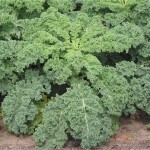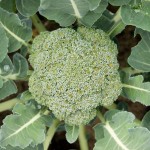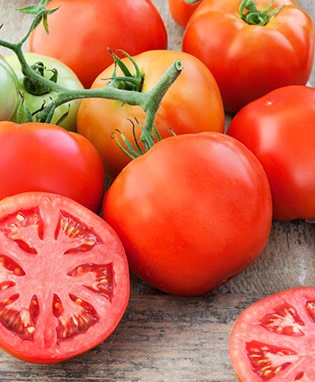Tomatoes in my Boxwood? Sounds like a weed problem, doesn’t it? I recall a telephone conversation I had several years ago with a potential client. A lady called me and said she had a terrible weed problem, “I’ve got bushes in my trees and trees in my bushes!” Indeed, upon arriving at her property, she had honeysuckle bushes choking the trunks of her shade trees and silver maples growing through her viburnums. Truly, it was a very difficult weed problem.
But, having tomatoes in your boxwood is a completely different situation, not a problem at all. It is but one means to have a vegetable garden without having to do too much work. I wrote an article last year that appeared on our website regarding the various ways vegetables could be incorporated into the landscape. It covered ideas such as using sunflower, sweet corn, peas, climbing beans, and melons to create plantings where a visual screen was needed. Many vegetables can be used alongside ornamental shrubs and perennials. Why not plant some tomatoes inside or behind a formal boxwood hedge, surely there’s enough light for tomatoes if the boxwood can thrive. And, instead of annual flowers in your landscape beds, why not plant vegetables. There is nothing better than getting home from work, walking to the front door to the house and stopping along the way to pick something to eat for dinner right from your own yard.
The current trend to buy organic produce from various farmers’ markets and specialty grocery stores is really gaining momentum. We all want to lead a healthier and active lifestyle. Fresh vegetables are really the rage. Why not grow your own? It’s really not too hard to grow vegetables if you do it the smart way, the less work, the better. Incorporating vegetables into existing landscape beds requires little more effort than digging a hole and planting a finished plug. Finished plugs can be purchased at garden centers, chain stores, and even farmers’ markets.
Even gardening in designated plots can be much less work than previously thought and practiced. The new, but actually really old, trend in no-till gardening is gaining momentum. The practices of double-digging, plowing, and roto-tilling are not always necessary or beneficial. The key is good soil (see our recent blogs on “squirmies” and good soil) and the care of it. A good resource for no-till vegetable gardening is the book entitled Weedless Gardening by Lee Reich. Emphasis is placed on the generous use of compost and the avoidance of soil compaction and soil structure disruption.
Okay, now we are ready to dive in and plant that garden! Not so fast. Even though the temperatures have moderated it is still way too early to plant some tender vegetables. I know that several stores have tomato plugs ready for sale right now, don’t fall for it and purchase them. Vegetables such as tomatoes, beans, and eggplant are far too tender to plant now. Cold soil and chilly temperatures will permanently dwarf and possibly kill these plants. But, some vegetables are cold hardy and could be planted now. Peas, kale, broccoli, and spinach are some examples.
 A little knowledge, a little work, great soil, and lots of sun, water, and patience are all that are needed to have a good vegetable garden. Know your limits and give it a try.
A little knowledge, a little work, great soil, and lots of sun, water, and patience are all that are needed to have a good vegetable garden. Know your limits and give it a try.

